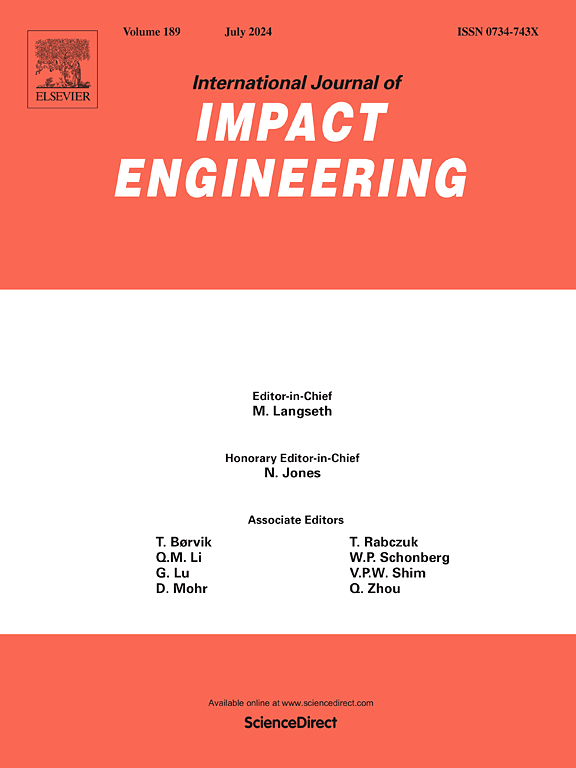CFRP桁架构件超高速冲击残余强度及损伤量化
IF 5.1
2区 工程技术
Q1 ENGINEERING, MECHANICAL
International Journal of Impact Engineering
Pub Date : 2025-04-12
DOI:10.1016/j.ijimpeng.2025.105345
引用次数: 0
摘要
空间资产需要能够承受极端环境的材料,同时保持高强度重量比,这是由于太空飞行成本高的一个关键因素。微流星体和轨道碎片(MMOD)日益对这些资产构成重大风险。碳纤维增强聚合物(CFRPs)为MMOD屏蔽和结构部件提供了更好的机械和物理性能平衡,因为它们可以根据特定的应用进行定制。评估MMOD对CFRP桁架构件的影响对于评估其在未来任务中用于大型空间结构的可行性至关重要。本研究的重点是识别和量化MMOD冲击对CFRP圆形桁架构件的亚表面损伤,并测量冲击后单个桁架构件的剩余强度。本研究采用高速成像和x射线计算机断层扫描(XCT)技术,量化了CFRP桁架构件在超高速弹片冲击下的次表面分层程度和残余强度损失,并采用冲击后压缩(CAI)试验来测量这种冲击引起的力学退化。结果表明,与复合材料桁架构件强度降低的相关性最大的不是超高速冲击入口孔的尺寸,而是次表面分层。本文章由计算机程序翻译,如有差异,请以英文原文为准。
Residual strength and damage quantification for hypervelocity impact of CFRP truss members
Space assets require materials that can endure extreme environments while maintaining a high strength-to-weight ratio, a critical factor due to the high costs of space flight. Increasingly, micrometeoroid and orbital debris (MMOD) pose significant risks to these assets. Carbon fiber reinforced polymers (CFRPs) offer an improved balance of mechanical and physical properties for MMOD shielding and structural components, as they can be customized to specific applications. Assessing the impact of MMOD on CFRP truss members is essential to evaluate their viability for large-scale space structures in future missions. This study focuses on identifying and quantifying the sub-surface damage from MMOD impacts on circular CFRP truss members and measuring the residual strength of individual truss members post-impact. Using high-speed imaging and X-ray computed tomography (XCT), this study quantified the extent of sub-surface delamination and residual strength loss in CFRP truss members impacted by hypervelocity projectiles, while compression after impact (CAI) tests were employed to measure the mechanical degradation caused by such impacts. The results indicate that sub-surface delamination, rather than the size of the hypervelocity impact entry hole, has the strongest correlation to the reduction in strength of the damaged composite truss members.
求助全文
通过发布文献求助,成功后即可免费获取论文全文。
去求助
来源期刊

International Journal of Impact Engineering
工程技术-工程:机械
CiteScore
8.70
自引率
13.70%
发文量
241
审稿时长
52 days
期刊介绍:
The International Journal of Impact Engineering, established in 1983 publishes original research findings related to the response of structures, components and materials subjected to impact, blast and high-rate loading. Areas relevant to the journal encompass the following general topics and those associated with them:
-Behaviour and failure of structures and materials under impact and blast loading
-Systems for protection and absorption of impact and blast loading
-Terminal ballistics
-Dynamic behaviour and failure of materials including plasticity and fracture
-Stress waves
-Structural crashworthiness
-High-rate mechanical and forming processes
-Impact, blast and high-rate loading/measurement techniques and their applications
 求助内容:
求助内容: 应助结果提醒方式:
应助结果提醒方式:


